[Jimbaux knows that the highway song is as lonely as the road he’s on.]
Now For Something Very Different
On Monday 29 December 2008, I traveled to a part of the southern part of my home state to which I had until then never visited, and my goal was to visit an obscure railroad line, a line that is a former mainline but that has effectively been a branchline for a couple of decades. By this time, my beloved Lockport Branch was almost dormant, the last railroad delivery to Valentine Paper having been made the year before. Because of the near absence of traffic on that branchline, and because other branchlines in the area were already dead and being reclaimed by nature, I set out go get the next-best-things, those lines that, even if not technically branchlines, had branchline-like qualities and whose existences well into the future were less of sure things than other railroad lines. This is part of why I spent time experiencing and documenting KCS’s Gulfport Subdivision, as I did earlier that same month (and continued to do for the next few years), and now I was doing the same on the Canadian National Railway’s line to the city of Bogalusa, which we are seeing today.
The city of Bogalusa – in the northeastern corner of the Florida Parishes of Louisiana, that part of Louisiana that was once part of Florida – was built in the early 1900s to support a sawmill that later closed and was replaced as the city’s main employer by a paper mill the ownership of which has changed a few times over the course of its existence. The railroad line into town was built for the main purpose of serving the sawmill and later served the paper mill, as it does to this day. The railroad was for a long time part of the Gulf, Mobile & Ohio Railroad, which accessed its own yard in New Orleans via trackage rights on the Southern Railway from Slidell to New Orleans – crossing Lake Ponchartrain on Southern’s bridge. However, when the Illinois Central Railroad merged with the GM&O in 1972 and renamed itself the Illinois Central Gulf, the GM&O line ceased to be a viable through route, as IC already had two mainlines – one a much more nearly direct route – into New Orleans from the north.
After the ICG merger, some local traffic on the Shoreline District – in Covington, Abita Springs, Mandeville, and other nearby communities – justified keeping the line from Bogalusa to Slidell intact, but the Shoreline Branch was abandoned in 1991, and the former GM&O mainline between Slidell and Bogalusa was abandoned in 1994. So, the line to Bogalusa became a true branchline in 1994, and, today, the paper mill in Bogalusa is the reason for the continued existence of the trackage south of Wanilla, Mississippi. The line uses the former Mississippi Central mainline between Wanilla and the current CN mainline in Brookhaven.
A Quick And Appropriate New Orleans Diversion
On my way out of town toward Bogalusa, I made a quick diversion in the Alvar Street area and saw this parked New Orleans Public Belt Railroad locomotive near the CSX mainline.
Between the CSX mainline (seen going left-to-right in the foreground) and me is where the GM&O’s connecting track between its yard and the L&N yard went across Almonaster Avenue, appropriate considering that I am on my way to GM&O country.
Stepping Onto The Rest of The Continent, And The Rest of The Culture
Those of you unfamiliar with southern Louisiana geography and unfamiliar with Louisiana culture(s) probably can’t appreciate how much of a weird transition it was, not that I didn’t expect it, for this bayou boy and New Orleans resident to go just a few dozen miles northward into piney woods WASP country. Just a few dozen miles makes a big difference in vegetation and culture and smaller differences in climate and topography. I am from the land of deltaic plains, oak trees, cypress trees, bayous, swamps, sugarcane, Roman Catholicism, alcohol consumption, and Franc0-Germanic-Mediterranean ethnicity; now, arriving into Washington Parish, especially past St. Tammany Parish, I had arrived into the land of red dirt, slightly rolling hills, pine trees, creeks, Evangelical Protestantism, alcohol prohibition, and White Anglo-Saxons – i.e., Americans. By going north, I had arrived in the South, but, to my bayou-bred eyes, what I saw here didn’t look much different than Ohio.
Bogalusa, Where It All Begins, and Where It All Ends
Here we are in Bogalusa, and we are looking southward where the line now ends, the line that once went to Slidell and then, via trackage rights, to New Orleans.
Now, turned around and looking to the north, we see a switch job working the southern throat of the yard, with the yard office at the left.
Imagine the GM&O’s Rebel passenger train moving down that jointed rail trackage! It is almost surely the same rails.
The paper mill is just to the right behind the trees, and that first switch leads to the paper mill.
Yes, this line is almost nothing but boxcars! Isn’t that neat? I think so.
Check out the shoving platform on the other side of the locomotive.
Here is a quick view to the west.
Again, I feel like I am stepping into the real America as I step onto the continent and into WASPdom.
Let’s have one last look toward the south toward New Orleans.
Now, let’s take a look at the mill itself and the trackage within it.
Either the above shot or the below shot showing the locomotive and the trainman is my shot of the day.
Then again, maybe this shot is my shot of the day.
All of this is highly fascinating, of course, hence my efforts to document all of it.
Now, it’s time to leave the mill, and make my way through town toward the north.
The history is indeed interesting.
Keep Going North, Deeper Into The South
At this point, having done all that I could with the switch job, I continued northward into heretofore uncharted (by me) territory. My research had found that the train out of Bogalusa only runs at night; so, I was not expecting to see any action, and I did not see any action, but my curiosity led me northward.
On the northern fringes of town is Miles Lumber, which, as far as I know, was, when these pictures were taken, the only other railroad customer on the line south of Wanilla, and may have since stopped shipping by rail.
Pressing onward further north, we arrive in the little community of Angie.
A caboose and a depot caught my attention here.
Something did not seem right with that depot, and Trainman203 later told me that the depot was not authentic to the location.
So, it seemed to all be part of a neat little campground or picnic area.
Oh, how nice it would be to see that caboose in action on this line, right? Here is a self-portrait in the fake depot before I get out of here and continue moving northward.
Whatever.
Mississippi Foray
Since my search for trains on the line was not yielding any trains, I figured that I would at least explore the line itself. Just across the border into Mississippi – the 31st Parallel – we arrive in the little community of Sandy Hook.
Interesting it was to be this far out of Bogalusa and know that the only reason why this track still exists is the mill in Bogalusa.
That station sign doesn’t seem to fit in with other CN or even IC signs.
Anyway, here is the crossing sign.
There is evidence of another track and a spur here.
Let’s get one last look at the track in Sandy Hook before we explore the rest of ‘town.’
Here is a house on the road to the track.
The woman who owned the house came out and accosted me for taking pictures of the house, wanting to know what the heck I was doing. I told her what I was doing, and then we had a cordial conversation. She told me that, as I suspected, the shingle damage on her roof was from Hurricane Katrina. I seem to remember, too, that she had a family connection to the old store at the highway.
Here are some of the bovine residents of Sandy Hook.
I frequently photograph farm equipment.
The birds have their residences too.
I arrived in Cheraw where there was some Maintenance-of-Way equipment parked.
Unseen there, there was also a BC Rail centerbeam flatcar with crossties on it.
Here is the view in the other direction.
This was interesting. At one time, there must have been actual freight here.
Moving further northward, I arrived in Foxworth, where I saw a string of boxcars in the siding.
Here is a cropped view of that image.
About that time is when I turned around and headed back home.
Coincidentally, I was in the Magnolia State and in the Florida Parishes along former ICG lines exactly one year before! So, it seems like on the 29th of December that I often photograph relatively exotic scenes, including what I did in Mexico two years to the day before I took these pictures that you see now!
Back Again At Bogalusa
I arrived back at Bogalusa just in time to get this shot of the old depot before the sun set.
The city fought hard to keep the Rebel passenger train.
The Year Winding Down
That was it. When I got home, the internet confrontation with a known bully led to the Godfather’s treachery, forever redefining my place among the local railroad enthusiast community, making me jaded and much more of a skeptic, causing a huge erosion of respect for he whom I had until then held in such high regard. The betrayal was deep and permanent, but I eventually got over it and generally put it out of my mind.
Anyway, we will have one more blog post of 2008 pictures. I hope that you have enjoyed these. Your comments are welcome in the comments section, and, where it asks for website (which is not required, since not everyone will have a website), those of you with profiles on Twitter, railpictures.net, rrpicturearchives.net, flickr, or any other such sites can put your profile pages there as your website when commenting. Also, those of you who comment here more than rarely might want to go to Gravatar and create a little avatar symbol for where the picture graphic is on the right side of your individual comments; it would make your comment even more personalized!
Thanks for participating.
Merci,
Jimbaux

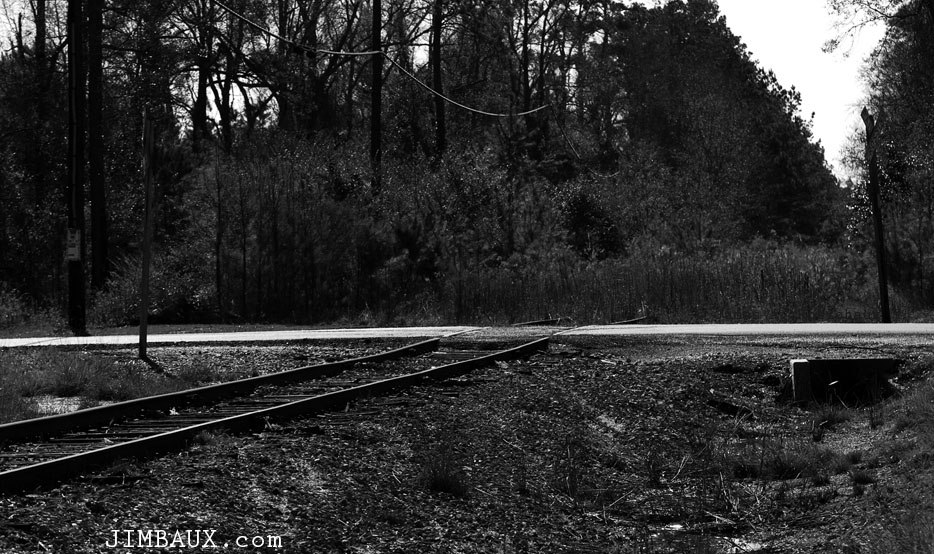
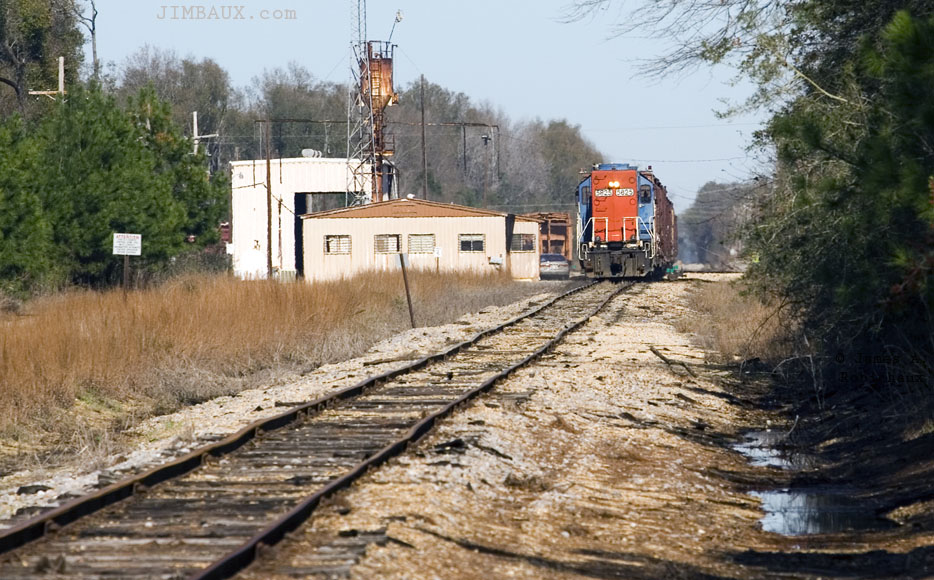

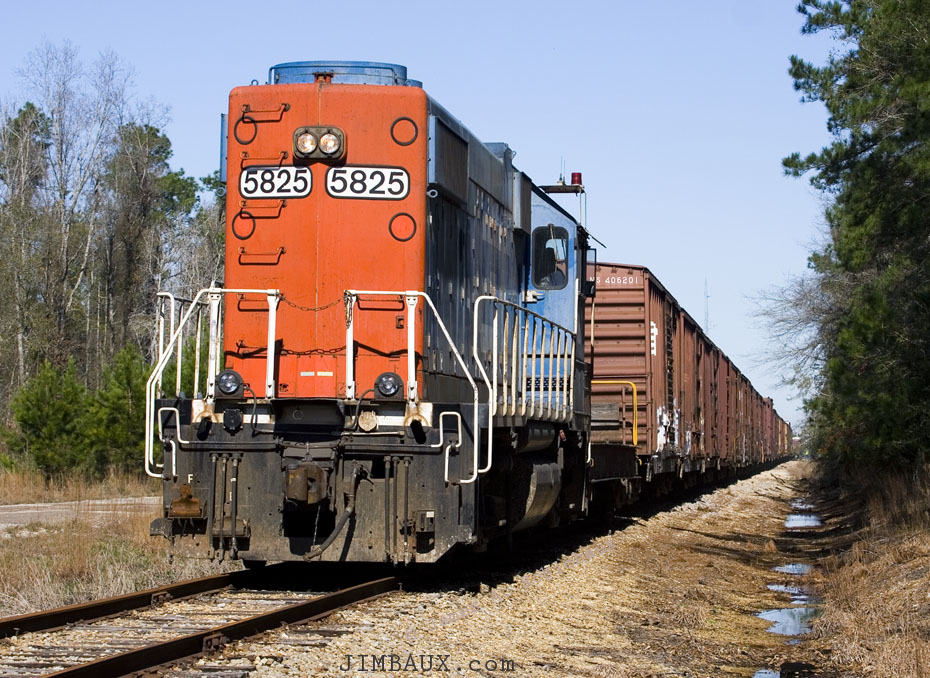



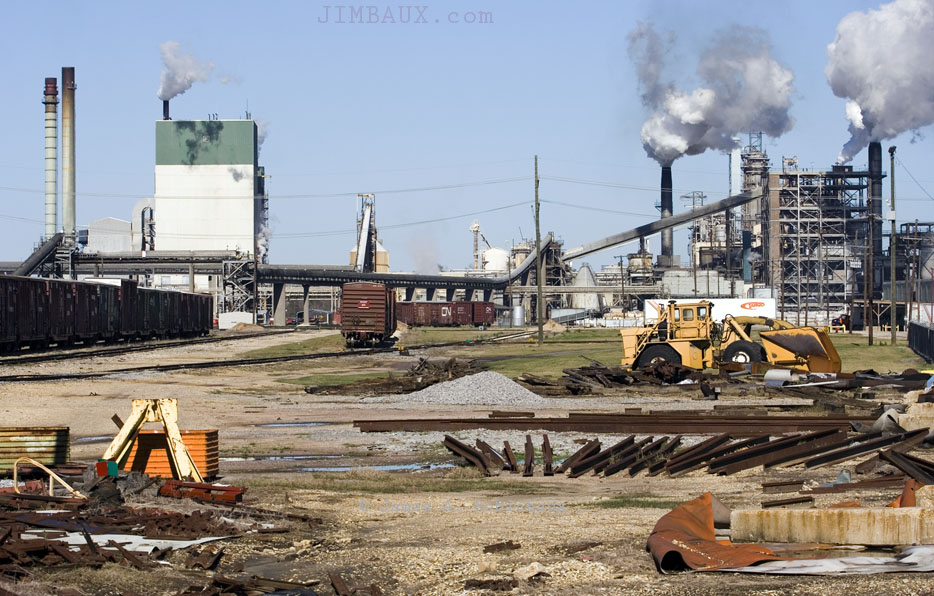
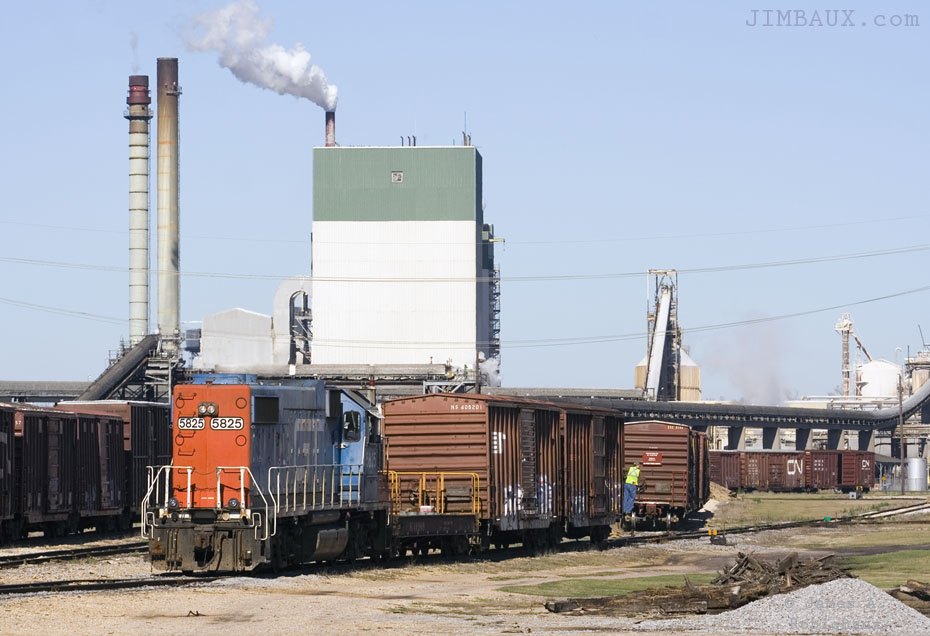
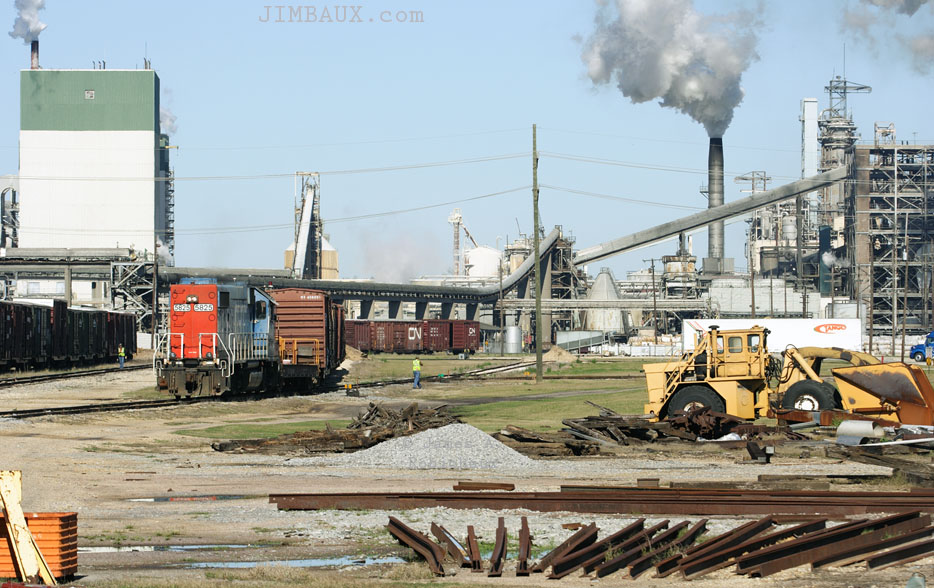

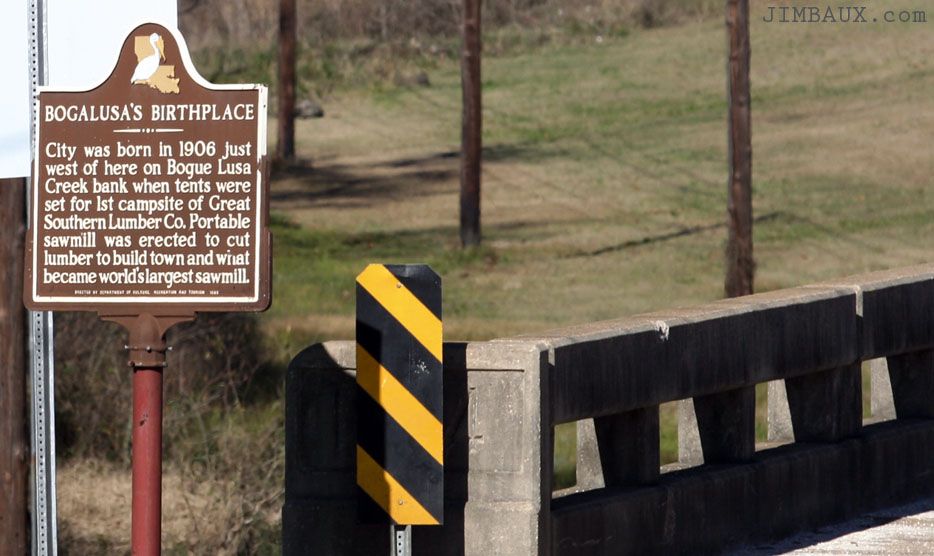
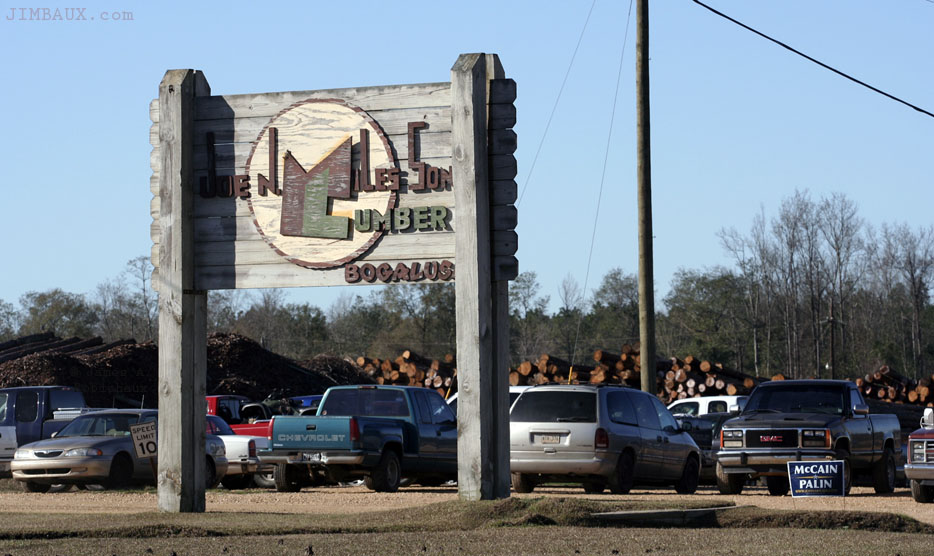


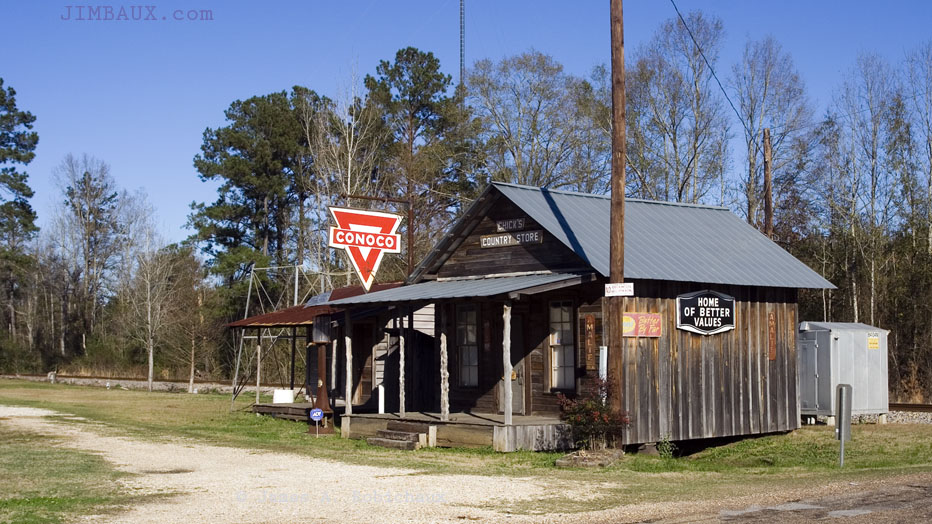
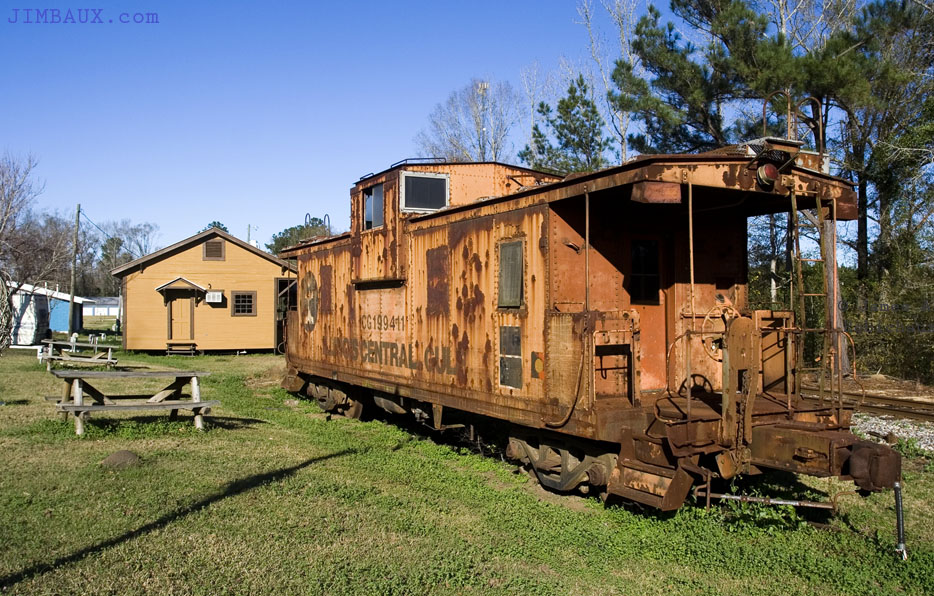

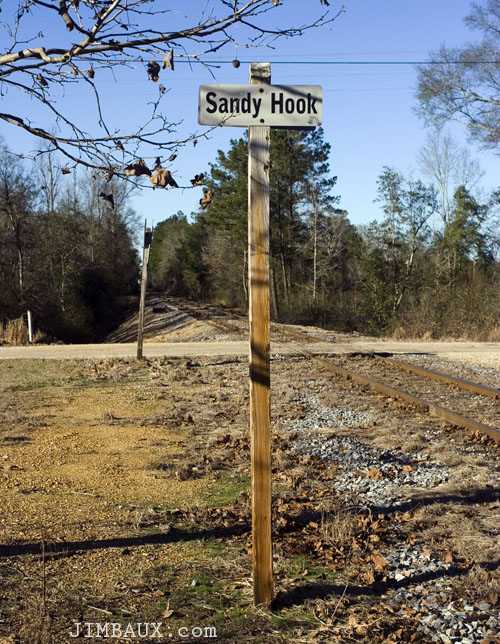
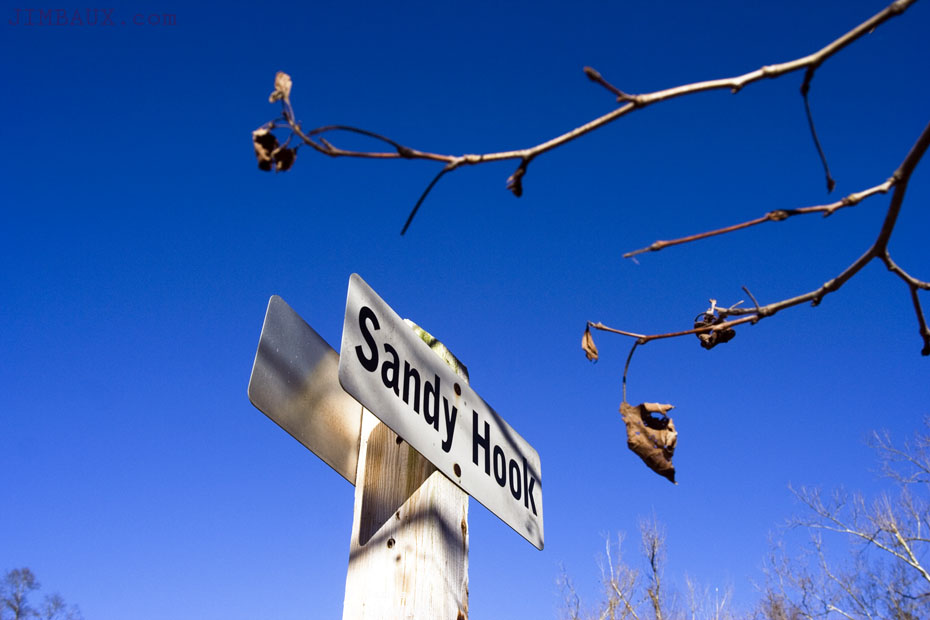
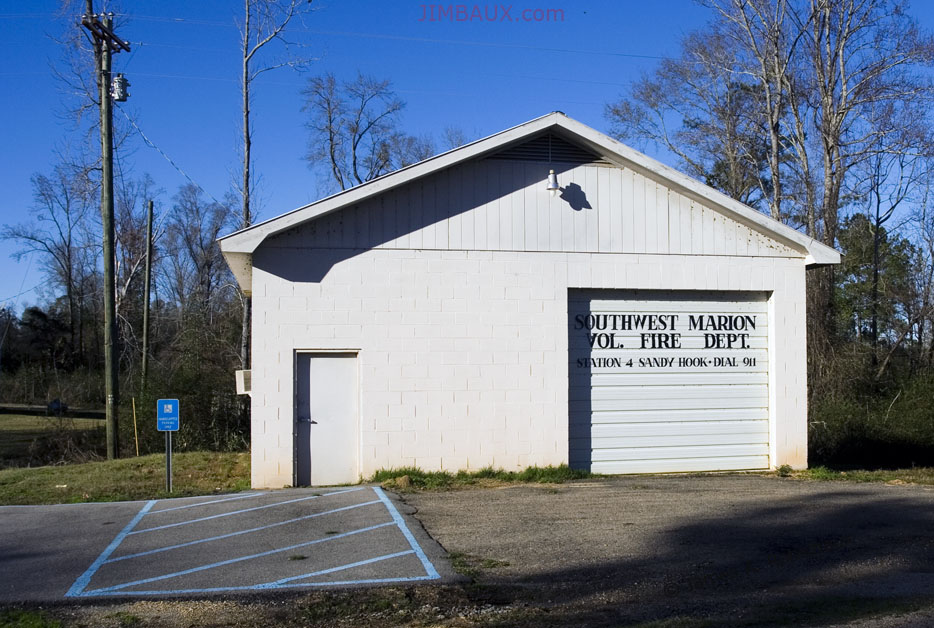
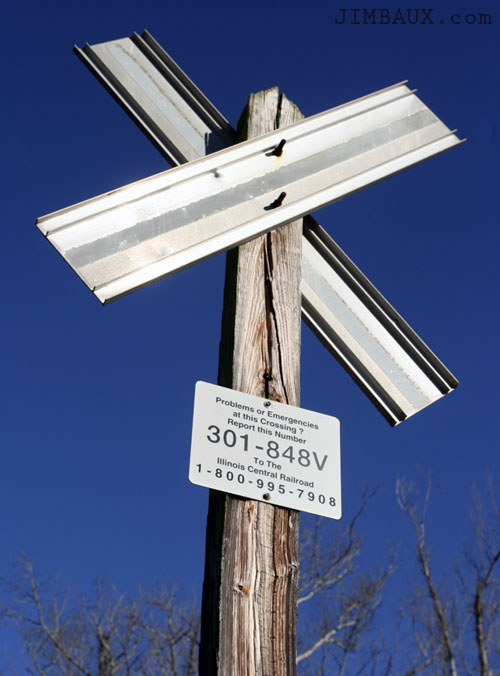
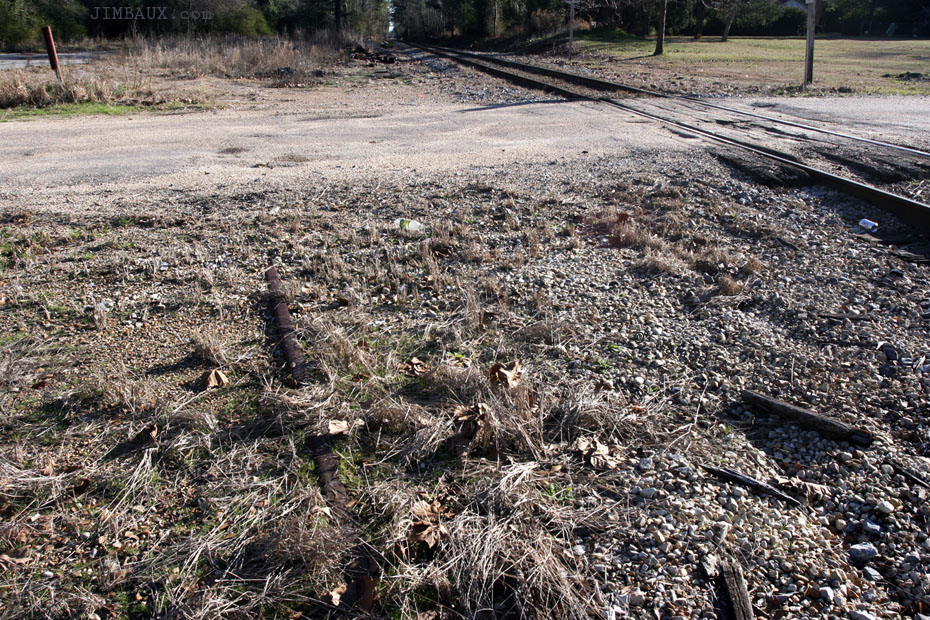
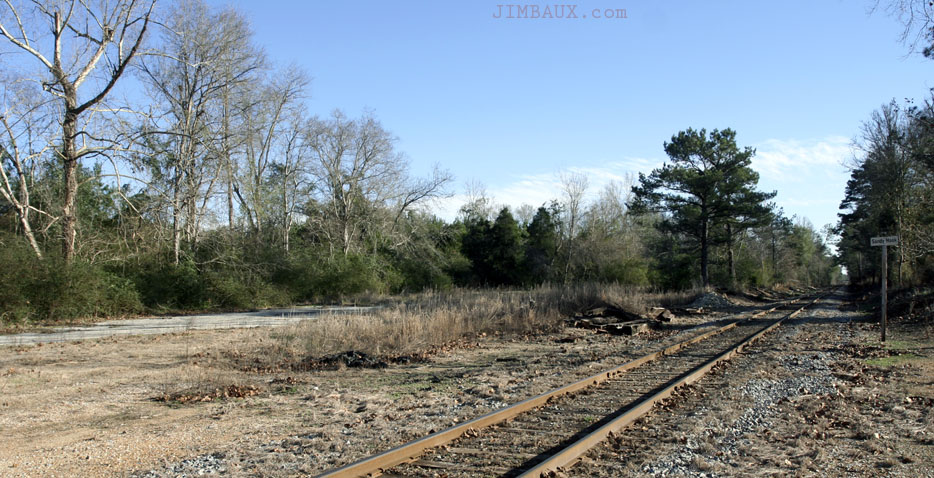


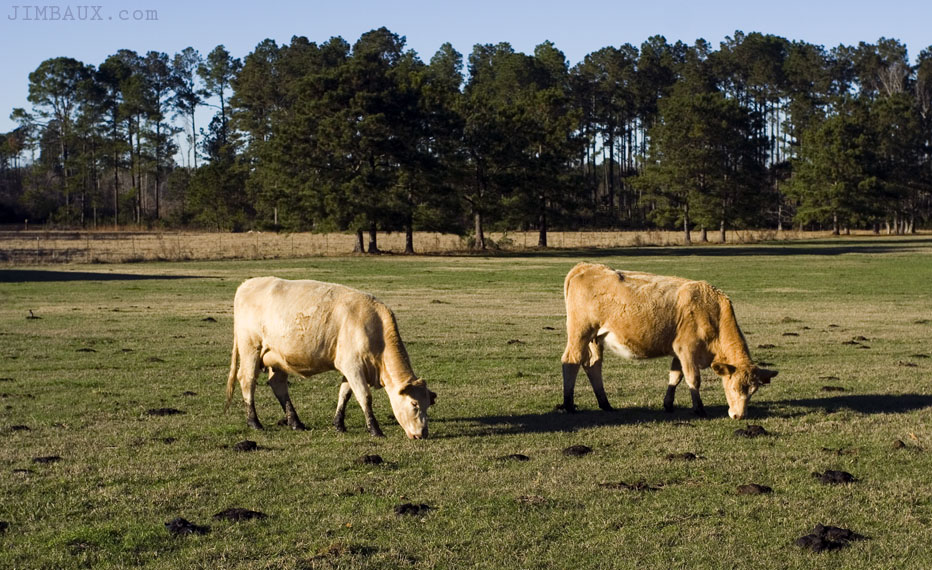

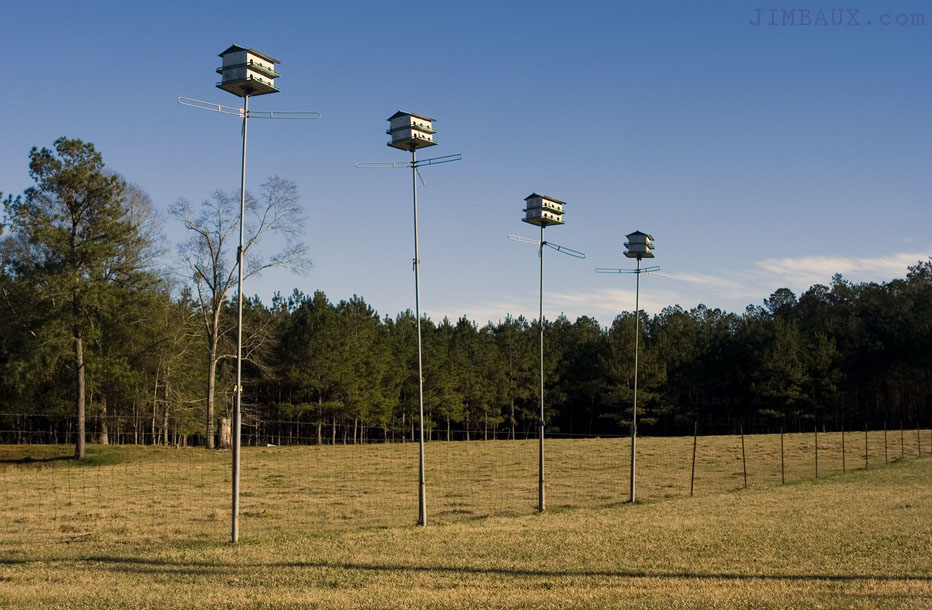
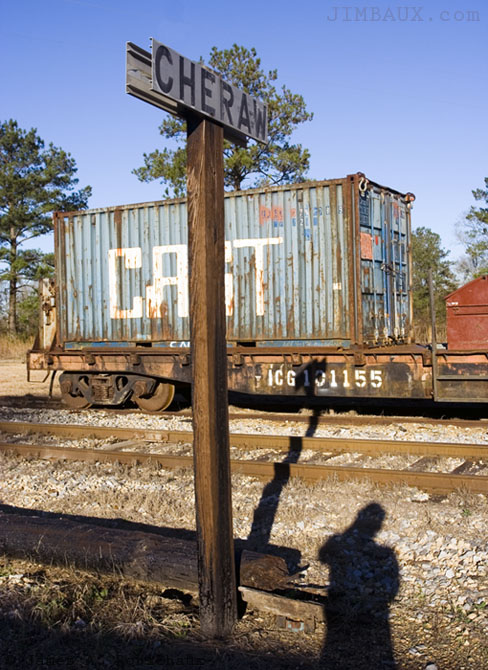
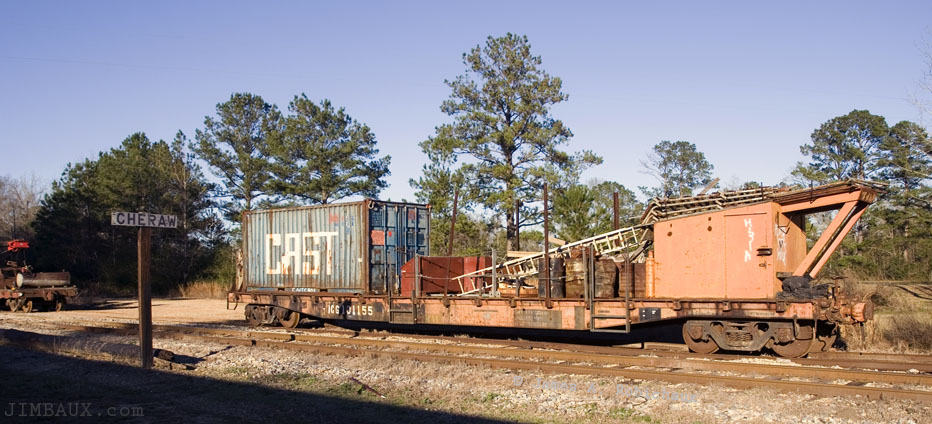
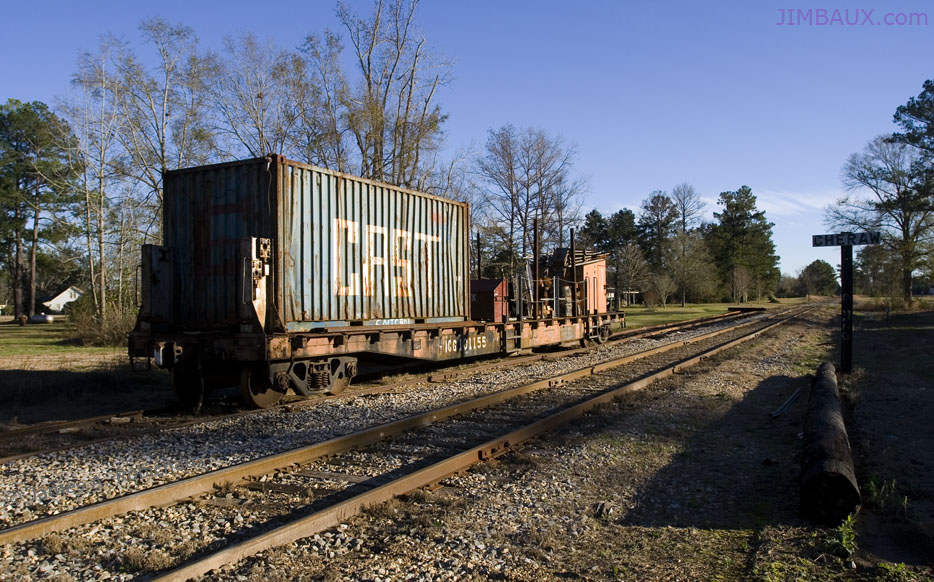
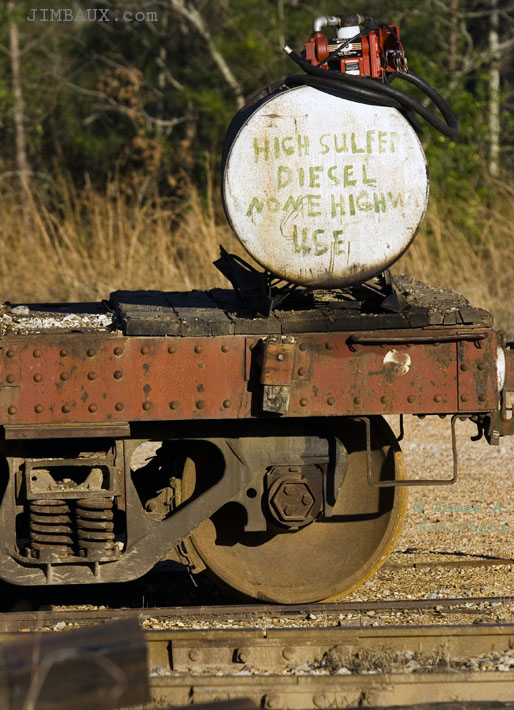

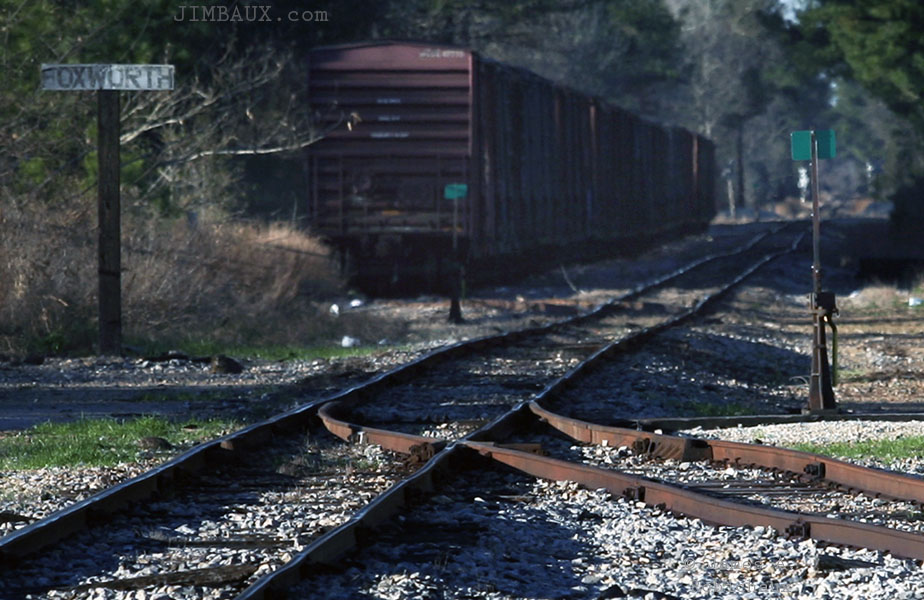

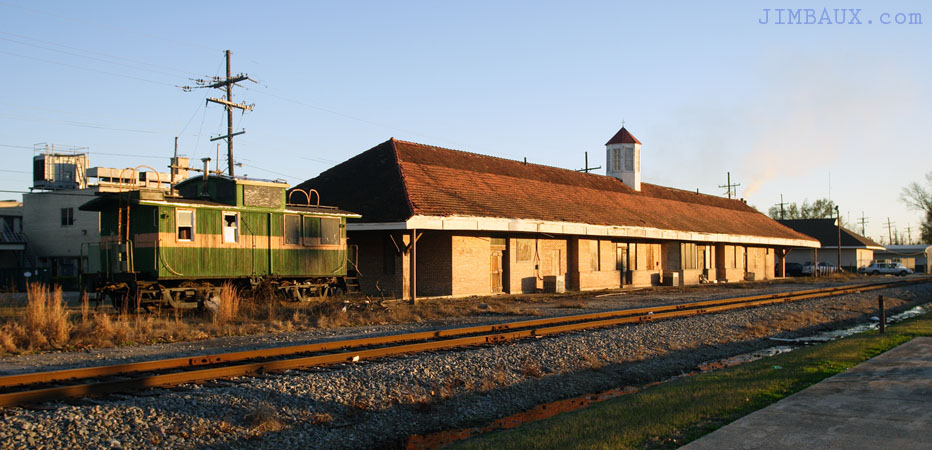

{ 5 comments… read them below or add one }
As always I enjoy your photos. Thanks
Great shots of our historical rail routes. At times you can see a mainline of a former Rebel routing. How much lighter equipment we had of our past, which used lighter rail.
I very much enjoyed the step back in time and travelog type narrative of how the great iron horse has transformed America as well as the fallen flag aspect of your narration.
From another train-aholic.
I am guessing you’ve never been to Ohio.
8-P
Hey James, I have a good friend that lives in Angie, La. by the name of JW Brumfield. He is a retired CN/IC/GM&O engineer and traveled over that same track during his career. In fact, his house faces the track on the east side. The way we became friends probably 5 years ago, is our common interest in motor cars! He has 10-12 different models of Fairmont motor cars. He has railroad laterns, REA wagons and signals. Oh yeah, he also collects John Deere hit and miss tractors and they all run. If you every have an opportunity, stop by and meet him. He loves to talk about his days on the railroad, but he has a sweet spot in his heart for the GM&O.
Bill Chidester
Prairieville, La.
KCS N.O. Sub
MP 806
You must log in to post a comment.
{ 2 trackbacks }